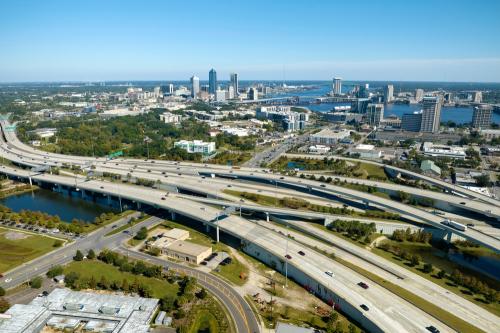An analysis of 2009 data on U.S. metropolitan areas’ contribution to state populations and economies, including a focus on key attributes that can drive the next round of U.S. economic growth, finds that:
In 47 out of 50 states, metropolitan areas generate the majority of state economic output. These majority-metro economies include even those states often considered to be “rural” in nature, such as Idaho, Iowa, North and South Dakota, and West Virginia. In states including Arizona, California, Maryland, and New York, metro areas generate at least 95 percent of state GDP. Metro areas among the 100 largest in the country account for a majority of GDP in 29 of the 50 states. Only in Montana, Vermont, and Wyoming does a majority of economic activity occur outside metro areas.
In 15 states, one large metropolitan area alone accounts for the bulk of economic output. These states are located in every region of the country, from Massachusetts (Boston) and New York (New York) in the Northeast, to Georgia (Atlanta) in the South, to Illinois (Chicago) and Minnesota (Minneapolis-St. Paul) in the Midwest, to Colorado (Denver) and Washington (Seattle) in the West. In a further 16 states, just two metropolitan areas generate the majority of GDP, including California (Los Angeles and San Francisco), Michigan (Detroit and Grand Rapids), Oklahoma (Oklahoma City and Tulsa), and Texas (Dallas and Houston).
The most innovative and educated workers in states cluster in metro areas. While metro areas account for the majority of population in 44 states, they house a majority of scientists and engineers in 48 states. In the typical state, metro areas contain a 10 percent greater share of statewide scientists and engineers than overall population. In Nebraska, for instance, the Omaha and Lincoln metro areas contain 57 percent of the state’s residents, but 82 percent of its workers in science and engineering occupations. Metro areas exhibit similar advantages in gathering educated workers; for instance, 58 percent of Kentucky residents live in its nine metro areas, as do 69 percent of its working-age adults with post-secondary degrees.
In 30 states, metro areas among the 100 largest nationwide generate a majority of internationally exported goods and services. In states where metro areas specialize in advanced manufacturing and services, such as California, Kansas, Michigan, and Oregon, large metro areas vastly out-perform other areas in export production. Metro powerhouses such as New York (78 percent), Phoenix (74 percent), Seattle (72 percent), and Portland, OR (71 percent) generate outsized shares of their respective states’ exports. In more agriculturally-oriented states, such as Iowa and Nebraska, smaller metropolitan and non-metropolitan areas generate disproportionate shares of statewide exports.
Metropolitan areas nationwide boast disproportionate shares of the assets that will drive the next wave of U.S. economic growth. With 84 percent of the nation’s population, all 366 metropolitan areas together produce 85 percent of U.S. exports, and are home to 86 percent of its lower-carbon commuters (those not driving alone to work), 89 percent of working-age people with a post-secondary degree, and 93 percent of individuals employed in science and engineering occupations.
The economic future for states hinges largely on the performance of their metropolitan economies, which bring together the innovative firms, educated workers, and critical infrastructure that will propel the next wave of U.S. economic growth. To successfully transition to the next economy, states should place economic development strategies in the service of metropolitan-led visions for economic growth, building from the distinctive assets and market strengths of these regions to grow quality jobs and promote sustainable, statewide prosperity.


